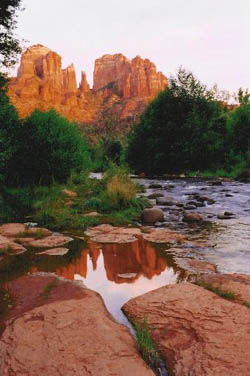Cathedral Rock in Arizona is made of a clastic rock called sandstone. These rocks are more than 250 million years old and are now being weathered and eroded away by the creek.
Click on image for full size
Courtesy of Larry Fellows and the Arizona Geological Survey
Clastic Rocks
Clastic sedimentary rocks are made up of little pieces of other rocks called
sediment. Mineral crystals called cement hold the sediment together.
There are many different types of clastic sedimentary rocks. To figure out
which type of rock you have, you will need to figure out the answers to these
three questions:
- How big are the sediments?
- Are all of the sediments about the same size?
- Are the sediments rounded or angular in shape?
You will probably need to use a magnifying glass to see the little sediment
grains.
Different types of sedimentary rocks form in different environments. For instance,
sandstone, a sedimentary rock made of sand grains, may form in a beach or desert
sand dunes. Shale, a sedimentary rock made of mud and clay, may form in a swamp,
the bottom of a lake, or some other muddy environment. Conglomerate, a sedimentary
rock make of gravel and sand, may form from the sediments at the bottom of a
stream.
Making a clastic sedimentary rock is a four-step process.
Last modified August 25, 2003 by Lisa Gardiner.
You might also be interested in:
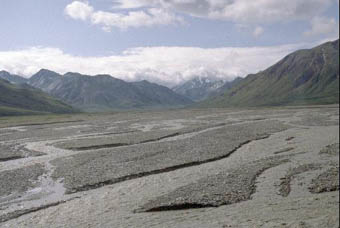
If you sneeze into a pile of dust, the little particles fly everywhere. But if you sneeze into a pile of rocks, they will stay put. It takes more force than a sneeze to move those rocks. Winds and water
...more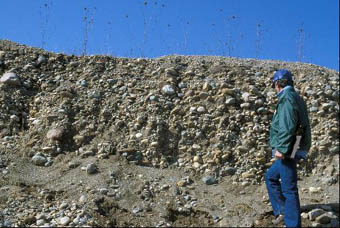
When water or wind loses energy and slows down, sediment can no longer be carried in it. The particles fall through the water or air and form a blanket of sediment on the bottom of a river, a lake, ocean,
...more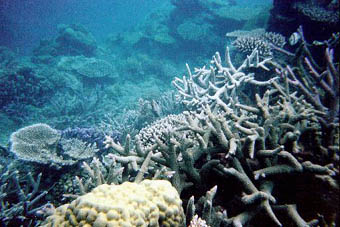
The sediment in an organic sedimentary rock is made of fossils! The hard parts of animals, such as bones and shells, can become cemented together over time to make rock. Usually the bones and shells are
...more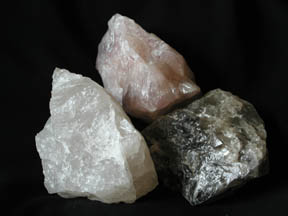
Spotting minerals is fun! There are many different types of minerals, each with a different name and a special set of characteristics. So, if you find a mineral that you do not recognize, you can use
...more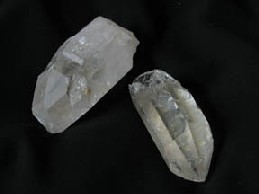
Quartz is one of the most common mineral in Earth’s crust! Silica (Si) and Oxygen (O) are the only elements within pure quartz. If a cooling magma has silica leftover after feldspars form, quartz is likely
...more
Mica minerals make some rocks sparkle! They are often found in igneous rocks such as granite and metamorphic rocks such as schist. They sparkle because light is reflected on their flat surfaces, which
...more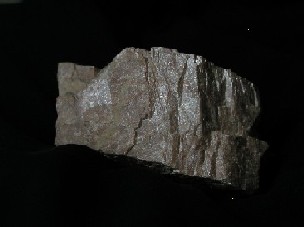
Feldspar is the most common mineral in the Earth’s crust, so you are very likely to find it in the rocks you collect! It is found it all of the three rock types, but is most common in intrusive igneous
...more


